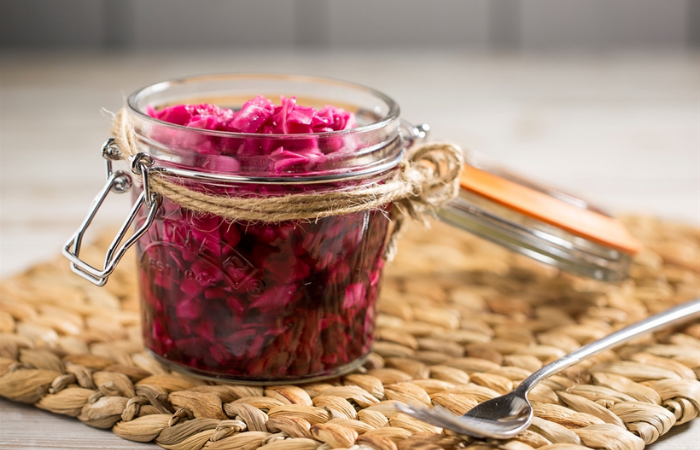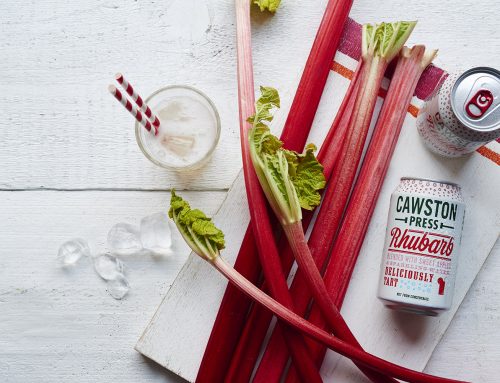I really enjoy eating fermented foods: kimchi; sauerkraut; yogurt; kefir; miso and sourdough for example.
They’re made using an age-old process that helps preserve foods and vitamins. They taste great, are good for your digestion, and provide your body with a healthy dose of probiotics – live microorganisms that are crucial to good digestion.
While we can, of course, buy excellent ready-made kimchi and sauerkraut, they are surprisingly easy to make at home, yourself, for a fraction of the price.
Home cooks around the world have been pickling and preserving fruit and vegetables for hundreds, if not thousands, of years, to keep perishable ingredients edible for longer, using mouth-watering flavours created by time-honoured processes still popular today.
Choosing the correct bottles and jars is not only key to maximising the quality and lifespan of the contents, but can, as I’ve recently found, make the whole process much easier.
 I’d made lots of kimchi before using a standard clip top jar, but had to keep remembering to let it ‘burp’ to avoid it ‘exploding’. But with the help of Kilner®, the iconic British glassware experts since 1842, I now find it so much easier.
I’d made lots of kimchi before using a standard clip top jar, but had to keep remembering to let it ‘burp’ to avoid it ‘exploding’. But with the help of Kilner®, the iconic British glassware experts since 1842, I now find it so much easier.
The Kilner® Set I Used
Kilner produces a set of two fermentation jars that are fabulous. 
The silicone valve in the lid releases the gas that builds up during fermentation but also blocks any air from entering the jar, which could cause the food to go mouldy.
The set, costing £22.50 comprises: 2 x 1 litre jars, 2 x special glass weights; 2 x stainless steel lids with silicone valves and a recipe booklet.
It is worth the initial investment as it will last for years.
Why Glass?
Glass is best for storing / preserving and transporting food and drink.
It is made from natural ingredients so no harmful chemicals or toxins can leak into the food.
Glass is BPA free and does not absorb odours, flavours or stains.
Not only is glass a healthier option, it is made to last and never for single use. Kilner® helps tackle plastic waste with its ethos of reuse, refill, and recycle.
My Handiwork
Here are some images of my recent batch – I’d advise putting the filled jars on sheets of kitchen roll inside a plastic tub or on a plate as the liquid will come out via the silicone valves.
Once it stops ‘bubbling’ i.e. fermenting, you can pop it in the fridge where it will keep for yonks and you can enjoy it with salads, in wraps and sandwiches and a host of other ways. 


There are lots of recipes online and here’s a great one to start from the Kilner® website
Happy fermenting!
Probiotic Beetroot & Red Cabbage Sauerkraut
This easy recipe combines classic red cabbage sauerkraut with earthy beetroot to create a rich and tangy flavour.
Sauerkraut promotes gut-friendly bacteria which we usually lack in our diets making it the perfect healthy, probiotic snack that can added to nearly any dish.
Ingredients
- Half a Medium Red Cabbage, finely diced

- 1 Medium Beetroot, peeled and grated
- 2 inch Ginger Piece, peeled and grated
- 1 tsp Sea Salt
Method
- Add all of the ingredients to a large bowl and sprinkle the salt all over. Use your hands to scrunch the salt into the vegetables and leave for a few hours, mixing occasionally, until the juices collect in the bottom of the bowl.
- Transfer the mixture into clean glass Kilner® Jars and press down really well. If the juices don’t completely cover the mixture, add more salted water (1 tsp sea salt to 1 cup of water). Make sure you leave around 1.5” headspace between the top of the jar and the liquid.
- Cover with a cabbage leaf and pack it down again. Put the lid on and leave it loosely fastened or if using a clip top, don’t fully fasten the clip.
- Leave out on your worktop for 4 weeks (the longer you leave it the stronger the taste).
- Once you have finished fermenting, seal tightly and keep in the refrigerator until chilled. It’s now ready to eat and will keep in the fridge for months.




